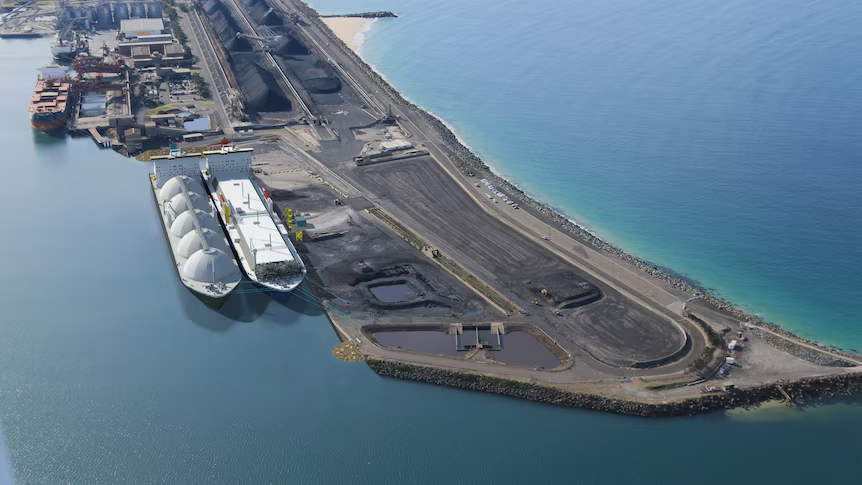Electricity network crews are working to restore power to customers across Victoria following widespread outages that affected more than half a million customers caused by severe storm damage.
Update 14 Feb 9.55am
Electricity network crews have restored power to a large number of properties following yesterday’s severe storms.
As at 9am, about 250,000 homes and businesses are still without power in Victoria due to storm damage, down from a peak of 530,000 yesterday evening. The majority…
— DEECA Victoria (@DEECA_Vic) February 13, 2024
One of four units at the Loy Yang A power station, located in Victoria’s Latrobe Valley, has resumed operation following a shut down due to damage caused by severe storms.
The power station’s remaining three units are still in the process of being reconnected to the grid. When fully functional, Loy Yang A has a maximum capacity of about 2,200MW and generates approximately 30 per cent of Victoria’s power.
The shutdown has been attributed to the collapsing of two transmission towers that prevented them from transmitting electricity, which in turn caused Loy Yang A to trip.
Update 14 Feb 7.30am
The Australian Energy Market Operator (AEMO) announced that electricity network crews have restored power to a large number of properties that lost power due to the storm.
However, AEMO said that approximately 285,500 homes and businesses are still without power in Victoria due to storm damage across the state, down from a peak of 530,000.
Vegetation clearing and repairs to damaged powerlines and poles continue. However, given the extent of the widespread damage, it may take days if not weeks to restore electricity to all of those impacted.
Emergency crews continue to endure challenging conditions to access and repair damaged powerlines and critical energy infrastructure.
Further information
At the peak of the outage, more than half a million customers were without power in Victoria.
Victoria State Minister for Energy, Lily D’Ambrosio, said it was one of the largest outage events in the state’s history.
“One unit at Loy Yang A power station has come back online and as a result forced load shedding is no longer required to maintain grid stability.
“The situation remains volatile. I’ll continue to provide updates as they become available.
“We are working with AEMO and relevant authorities to get Victorians back online as quickly as possible and we want to thank those impacted for their patience,” Ms D’Ambrosio said.
Approximately 90,000 customers lost power due to essential load shedding by AEMO, however all of these customers have since had power restored.
AEMO said in a statement that it was investigating the cause of the power outages.
“In Victoria, the Moorabool to Sydenham 500kv transmission line tripped, multiple generators disconnected from the grid and some consumers experienced a loss of electricity supply.
“To keep the power system secure, AEMO directed AusNet Services to enact load shedding.
“Controlled load shedding is a mechanism AEMO uses as an absolute last resort to protect system security and prevent long-term damage to system infrastructure,” AEMO said.
Monash University Associate Professor, Roger Dargaville, said that additional system security measures, such as excess energy generation, may be necessary as extreme weather conditions become more frequent as a result of climate change.
“On Tuesday afternoon, a severe storm belt with wind gusts over 100km/h, extreme lightning and torrential rain caused havoc across Melbourne. Amongst lots of localised power outages due to low voltage power lines being damaged was the destruction of several towers supporting the parallel 500kV lines between Melbourne and Geelong. The effect of losing that vital infrastructure was to ‘trip off’ the Loy Yang A power station.
“As in the case of South Australia in 2016, we have seen instances where an entire state’s grid was impacted leaving everyone statewide without power. The fact that the Victorian grid did not completely fail is a testament to the resilience in the system and the safety mechanisms in place to protect vital infrastructure.
“Distributed renewable energy systems offer both more vulnerability due to more infrastructure spread over wider areas, but also additional resilience as losses of individual power lines don’t have the same impact of losing large centralised power stations.
“As a result of climate change we are bound to have more wild weather conditions in the future and our energy systems must learn to adapt and grapple with such situations more often. Additional system security measures such as redundancy i.e., extra energy generation beyond just what is forecast to be required, and fast response storage technologies will help make the system more robust,” Mr Dargaville said.
